The modern retsina is made following the same winemaking techniques as white (or occasionally rosé) wines – but with the addition of small pieces of Aleppo pine resin during fermentation, giving the wine its distinctive piney, limey, salty flavours.
The pine resin was first used to line and seal terracotta amphorae, and became a method of preserving the wine. Then ancient Greeks acquired a taste for it.
Typically, retsina is made with Savatiano, Greece’s most widely planted grape variety.

To find out more about retsina’s revamp, Canopy contacted Athens-based export consultant and oenologist Chryssa Gribabi (above), who identifies the large wine region of Attica, which includes Athens, as spearheading the revival of Greece’s national wine.
Canopy: Tell us more about Attica.
Chryssa: “The climate is warm Mediterranean with very warm summers (average annual temperature is 18°C) and mild winters. The topography of the region varies from mountainous, semi-mountainous to lowland vineyards close to the sea. The sea surrounding Attica provides the vines with a moderating effect, cooling them during the warm and dry summer days.
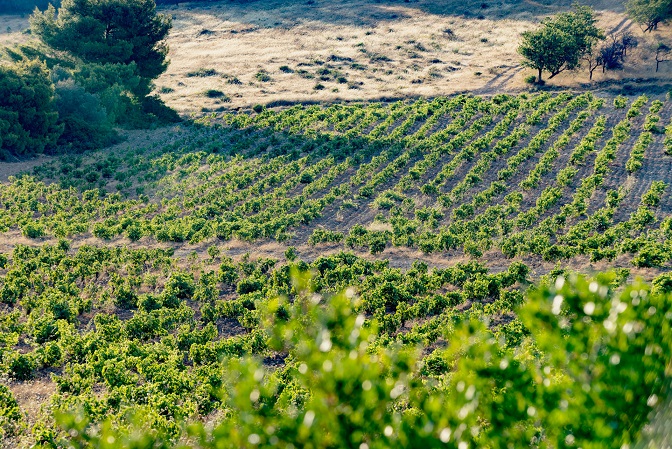
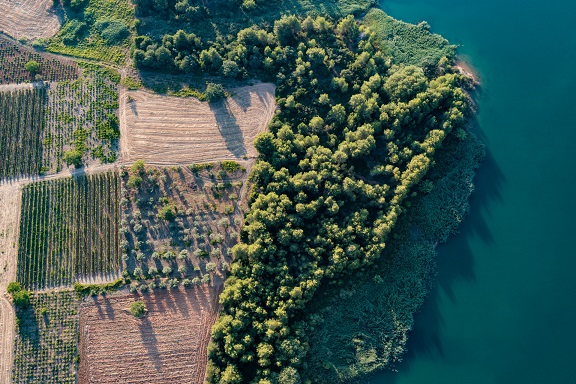
“On average, the vines are more than 60 years old, bush-shaped and planted mainly in limestone and sandy clay soils. The focus is on Savatiano, by far the main variety of the region. The grape yield is very low – about 500kg/ha – and harvest is done manually. The grapes are handpicked into small crates, sometimes during the night, when the temperature is lower.
“State-of-the-art winemaking techniques are then applied to the Savatiano, producing high-quality wines. Apart from the standard white vinification in inox tanks that will give the fresh-style Savatiano, some are fermenting in oak and/or acacia barrels to give extra richness to the wines. Other winemakers prefer to further age their wines in inox tanks or barrel sur lie for several months, along with frequent bâtonnage. Others will also traditionally sun-dry the Savatiano grapes under the Attican sun for several days to produce naturally sweet wines.
“And last, but not least, we have the retsina wines, produced since the beginning of winemaking in Attica (4,000 years ago) and mainly from the Savatiano grape. High-quality resin, Pinus Halepensis from pine trees grown in Attica, is used for its production. The resin is added in a moderate way into the must, preferably before the start of the alcoholic fermentation, in controlled conditions. The new style retsinas are different from those of the past, due to a revival of the region and modern vinification techniques that are being applied.”
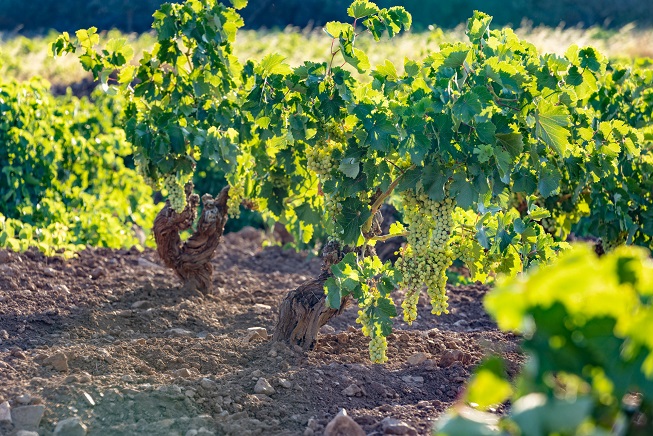
Why is Attica at the forefront of retsina’s revival?
Chryssa: “Attica offers the most ideal terroir for the production of the Savatiano grape variety and the high-quality wines that are produced there, which is why the variety has largely been produced in Attica. In addition, Attica also provides the ideal conditions for the cultivation of the species of pine trees (Pinus Halepensis) which provide the premium resin used for producing retsina.
“Also, Attica – the centre of the production of retsina – has taken the lead in the emergence of the modern, new-age style. This revival began with the upgrade of the Attica vineyards to produce the highest quality grapes possible to be used for retsina. In addition, the wineries are experimenting with the most modern winemaking techniques available to produce different styles of this iconic wine.”
What is the new style?
Chryssa: “Modern retsina – a wonderful mix of intensity, freshness and complexity that pairs with the diverse flavours of Greek and international cuisines.
“These wines show elegant, subtle aromas of pine, sage, rosemary, mastic, ginger and spice, which accompany the dense fruit.”
How is it different from the old style?
Chryssa: “Retsina was one of the most recognisable wines of Greece, although, unfortunately, that did not necessarily mean quality. It was always the least expensive wine on the table, usually made from inferior wine. So, not without reason, the name retsina became associated with inexpensive, poor quality wines. The usual practice at the time was to use large doses of resin to mask poor quality grapes, often made by untrained, amateur winemakers without advanced technical means. The wines turned out to be oxidised, flabby, without any freshness and lacking in balance. The overuse of resin also destroyed any hint of the grape.
“Modern retsinas combine superior fruit with the elegant, subtle aromas and flavours of pine, sage, rosemary, mastic and ginger.”
“Modern retsinas combine superior fruit with the elegant, subtle aromas and flavours of pine, sage, rosemary, mastic and ginger”
How is this new style being achieved?
Chryssa: “There are four key factors:
- Excellent grape quality;
- State-of-the-art winemaking technology, including the use of modern amphorae and oak ageing;
- The choice of fresh pine resin in moderate amounts to give a balance between varietal fruit and the aromas imparted by the resin;
- Selecting the optimal time and temperature for the extraction – more an infusion now – of the resin (this is the subject of continuous study and determines the final taste profile of the wine).
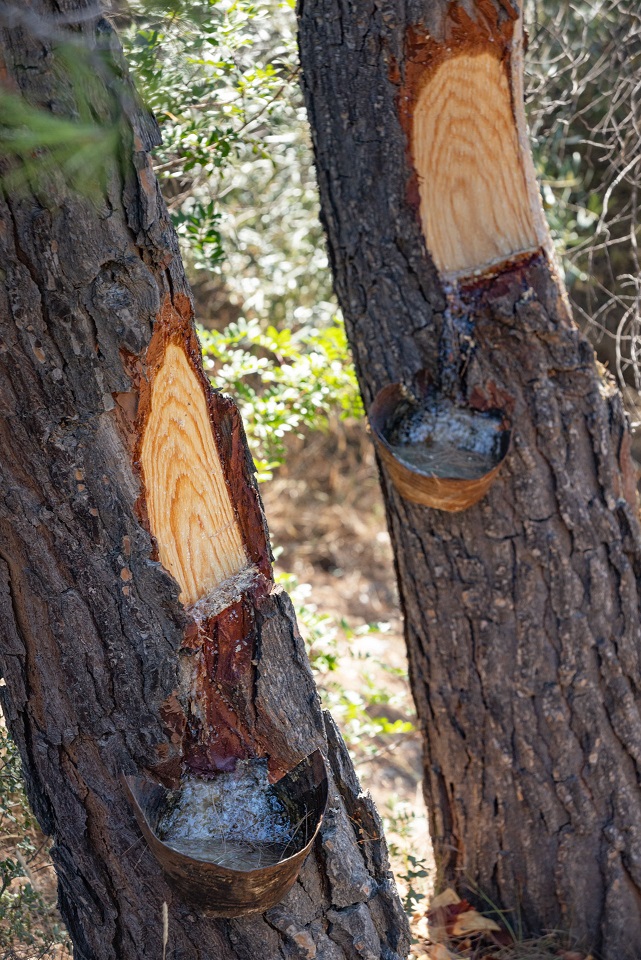
What are the step-by-step details of the winemaking?
Chryssa: “The first thing is gathering the resin. The fresh, fragrant resin is collected manually from the large pine trees of Attiki, famous for the excellent quality of resin they produce.
“Usually the collection period extends from April to the beginning of October.
“The bark of the pine tree is torn and removed. The exposed wood is then carved to a depth of a few centimetres and the ‘tears’ that begin to flow are collected in containers placed under the cut bark. Each tree will yield about 1kg of resin. For a few years afterwards, until the bark of the tree is restored, the same pine tree will not be reused and is left to heal.
“During the vinification of the grapes, the Aleppo pine resin is added to the must in a small porous bag before the start of the alcoholic fermentation (or during it, as long as no amount of sugar greater than one third of the original content has been fermented), in an amount of up to 1kg per 100L of must.
“Often producers use a significantly lower percentage of resin for the modern-style retsinas. In addition to the amount of resin, the amount of time the resin is left with the must is carefully controlled, as well as the temperature at which the extraction takes place.”
What modern vinification methods are being applied?
Chryssa: “The historic wine region of Attica has experienced a true renaissance over the last 20 years as winemakers have taken advantage of the latest winemaking technology and applied it to their centuries-old traditions of producing wines from the native Savatiano grape variety. The traditional retsina wines of the past have also undergone a transformation into a modern, more delicate style that compliments the local cuisine. In addition, much work has been done to upgrade the vineyards of Attica in order to produce higher quality grapes, the first step in making good wine.”
How is this approach helping the revival of the region?
Chryssa: “PGI Retsina of Attiki wines are inextricably linked to the wine tradition of Greece. For centuries, retsina was – and still is – identified with Attica. PGI Retsina of Attiki is produced within the entire prefecture of Attica. Modern retsinas impress with their quality and special character, having reshaped the way consumers now view the wines, ameliorating the negative images of the past. The Savatiano variety and retsina will always be inextricably linked together to create one of Greece's most iconic styles of wine.”


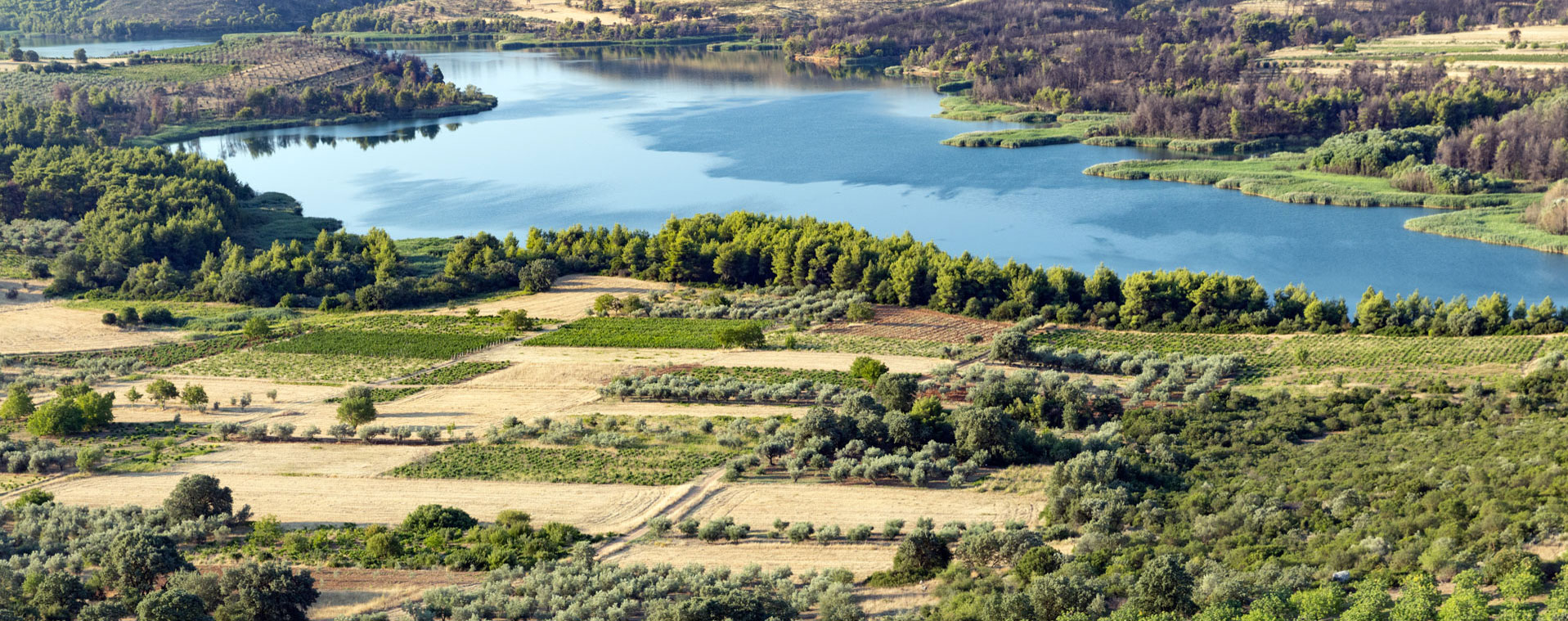










.png)






